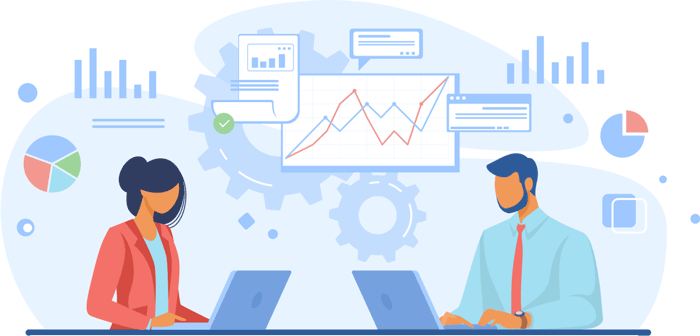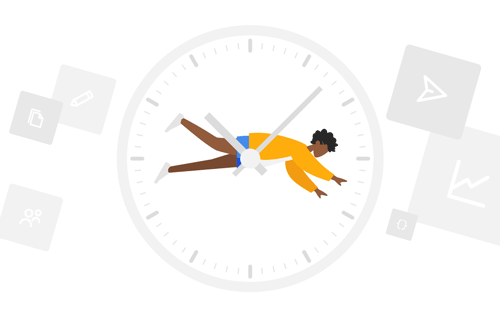Learn Algorithmic Trading
In this tutorial, we will help you learn how to trade the markets using automated trading strategies (cBots) with the cTrader Desktop trading platform. At the end of this tutorial, you should feel confident about using a cTrader cBot with the Algo application of cTrader to submit and manage your market orders automatically. This course helps new traders understand the fundamentals of algorithmic trading using the cTrader platform.

How to Download & Install cTrader Desktop
If you have not downloaded and installed cTrader Desktop yet, then this is your first step. Please note that you cannot use cTrader cBots for algo trading with cTrader Mobile or Web; you need cTrader Desktop for Windows.
What is an Automated Trading System
Automated trading systems typically use technical analysis indicators like moving averages, trend lines, and momentum indicators to identify trading opportunities. If you are completely new to algorithmic or automated trading in the financial markets, we recommend that you first read the following article.
cTrader Algo Application Overview
The cTrader platform has two core applications, one is for manual trading and the other is for Algorithmic trading or running other custom cBots, it can also be used for programming new cBots and indicators.
- cTrader Algo Overview (video)
- cTrader Algo User Guide
- Automated Trading System (video)
What is Optimisation?
Optimization refers to the process of adjusting the parameters and variables within an automated trading system to achieve the best possible performance. Traders can use optimization to fine-tune their strategies and improve their chances of success in the market.
This involves testing different combinations of parameters and variables, such as stop-loss levels, take-profit levels, and technical indicators, to determine which settings produce the most profitable and stable results.
By optimizing their automated trading systems, traders can maximize their profits and minimize their risk of losses. However, it is essential to note that over-optimization can lead to overfitting, which occurs when a trading system is too closely tailored to historical market data.
How to Optimise a cBot
Assuming you have commissioned a professional company like ours to build an automated trading system functioning precisely as you intended, you are only halfway there. In the absence of appropriately configured parameter settings for each financial instrument, the system's performance may fall short of its potential, and you may need to spend a considerable amount of time identifying the optimal values.

What is Backtesting?
Backtesting an automated trading system involves using historical market data to simulate how the system would have performed if it had been used to trade during that period. This process enables traders to evaluate the trading system's effectiveness by analyzing its performance over a specific time frame and identifying potential issues or areas for improvement.
By backtesting their automated trading systems, traders can make informed decisions about using the system in live markets and, if so, how to optimize it for maximum profitability and risk management.
Conducting backtests is a critical element of trading system development. It enables traders to enhance and refine their strategies, identify any technical or general weaknesses, and establish confidence in their approach before implementing it in live markets.
How to Backtest a cBot
Backtesting refers to evaluating the efficacy of an automated trading strategy by testing it against historical data before deploying it on a live account. This allows the trader to simulate the strategy's trading activity over a specified duration and examine the outcomes in terms of both profitability and risk.
Trading System Timing
It is worth studying when to use an automated strategy and when to turn it off. If you use a trend-based strategy, you may want to first identify a trend that is still running for a particular symbol and then run the system. If the market for the symbol is in a channel, you may want to turn it off.
A trading system timing in the financial markets refers to the strategy or approach used to determine the optimal time to buy or sell assets such as stocks, bonds, currencies, and commodities.

Trading system timing is typically based on analyzing various factors, such as technical indicators, market trends, economic data, news events, and other relevant information, that can affect asset price movements. Traders may use different trading systems, including trend-following, mean-reversion, momentum, and other strategies.
The trading system timing aims to identify and exploit opportunities for profit by entering and exiting trades at the right time. Traders who can successfully time the market can potentially generate significant returns, but this requires careful analysis, discipline, and risk management. It's worth noting that no trading system timing is perfect and can guarantee profits, as the financial markets are inherently unpredictable and subject to various risks and uncertainties.
Additional Support
We can provide some additional support through our support site to help you understand how to optimise and backtest a cTrader cBot.
Hard Facts of Algorithmic Trading
Many traders begin their algorithmic trading journey believing they have discovered a foolproof method to achieve effortless wealth. Unfortunately, this notion couldn't be further from the truth. If you want to save time and money, I recommend reading this article. It will provide you with valuable insights on the matter.



